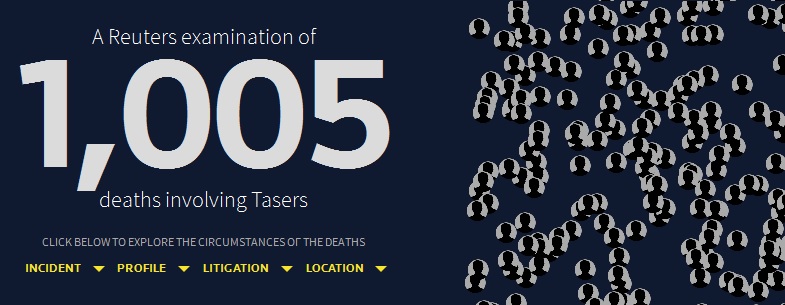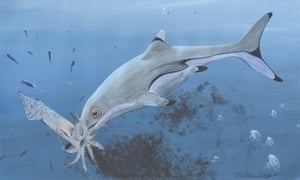via the OUP blog by Peter Marshall

Painting of Luther nailing 95 theses by Julius Hübner (1806–1882).
Public domain via Wikimedia Commons.
This year [2017] marks the 500th anniversary of the beginning of the Reformation and Martin Luther’s nailing of his 95 Theses to the doors of Wittenberg Castle Church. But how much of what we think about it is actually true? To coincide with this occasion, Peter Marshall addresses 9.5 common myths about the Reformation.Continue reading
==============================
via the Big Think blog by Paul Ratner

Cosimo Rusconi (l.) and Oriol Romero-Isart (r.) play with a levitron to demonstrate their work on nano magnets. Credit: IQOQI Innsbruck/M.R.Knabl
Researchers demonstrate in two new papers that despite a classic 175-year-old theorem saying it’s impossible, nanomagnets can be stably levitated in an external magnetic field. How can this be accomplished? Thanks to quantum mechanical principles.
In 1842, the British mathematician Samuel Earnshaw proved you can’t have a stable and permanent configuration of levitating magnets. If you float one above another, the whole setup can collapse with the slightest movement. An international team of physicists has shown that “in the quantum world, tiny non-gyrating nanoparticles can stably levitate in a magnetic field.”
Continue reading
==============================
via The National Archives blog by Ralph Thompson

Title page of the ‘Agreement of the People’, printed at Smithfield by George Ibbitson (catalogue reference SP 116/530/23)
Three hundred and seventy years ago this autumn [of 2017], among the dying embers of bloody civil war, emerged what was to be the first truly democratic pressure group in British political history.
By the end of the First Civil War (or war of the Stuart Kingdoms), the divisions of 1642 had become further complicated by the formation of the New Model Army in 1645. Valuing merit and proficiency above privilege and social standing, in 1648 it was to use force against a Parliament that wished to disband it.
During the summer of 1647, attempts by parliamentary commanders – army grandees like Thomas Fairfax and Henry Ireton – to negotiate a settlement with Charles I lost them the support of the military and civilian radicals (or ‘Levelling’ party) within their ranks.
Continue reading
==============================
via Boing Boing by Andrea James

A doggo named Ajax has been specially trained to sniff out the kea, an endangered bird endemic to New Zealand. Watch this charming short as they roam the mountainous South Island.
Continue reading and yes, there is a video
==============================
via OUP blog by Anthony Kaldellis

Marriage Ring with Scenes from the Life of Christ” provided by the Walters Art Museum. Public domain via Wikimedia Commons.
The Byzantine civilization has long been regarded by many as one big curiosity. Often associated with treachery and superstition, their traditions and contributions to the ancient world are often overlooked. Referencing A Cabinet of Byzantine Curiosities, we’ve pulled together nine lesser known facts about love and marriage in Byzantium.
Continue reading
==============================
via Arts & Letters Daily: James Gardener in the weekly Standard

Alexander Calder's Parasite (1947)
In the past 100 years, no visual artist has contributed more to the sum total of human happiness than Alexander Calder. If you think about it, this generating of happiness, to the extent to which it retains any cultural prestige these days, is seen as the domain of musicians and writers far more than of painters and sculptors; rather, since the rise of modernism, vexing the public has been the more likely mission of visual art. But if the works on view in the Whitney’s current Calder: Hypermobility exhibition, devoted to his kinetic sculptures, are among the most revolutionary of the past century, they present themselves with such grace and modesty and charm that even small children, knowing nothing of vanguardist aesthetics, respond with all the delight that Calder clearly wanted them, and us, to feel.
Continue reading
==============================
via Interesting Literature
Classic poems about selfhood and identity
Poetry and self-expression go hand in hand: we often treat them as synonymous. Of course, this is a relatively modern notion, largely the legacy of the Romantics in the late eighteenth and early nineteenth centuries – and poets in the twentieth century in particular have sought to move away from this idea of poetry as a record of the poet’s own self. (See T. S. Eliot’s influential essay ‘Tradition and the Individual Talent’ for one prominent example.) Nonetheless, many poets have written about the self, and their individual identity, as the following classic poems about selfhood demonstrate.
Continue reading
==============================
via Big Think by Teodora Zareva

Simplified map of Earth’s tectonic plates and continents, including Zealandia. Credit: GSA Today
After decades of research and analysis of geoscience data, a paper published in February this year (2017) made “official” in the scientific community the classification of the seventh largest geological continent - Zealandia.
Zealandia is the youngest, thinnest and most submerged of all continents, with 94% of its surface currently under water. The name Zealandia was first used in 1995 by geophysicist Bruce Luyendyk to describe a large region of continental crust encompassing New Zealand, the Chatham Rise, Campbell Plateau, and Lord Howe Rise.
Continue reading
==============================
via Boing Boing by Cory Doctorow

The official party line from Taser – who make less-lethal electrical weapons as well as a range of police body-cameras and other forensic devices – is that its weapons don't kill ("no one has died directly from the device’s shock"). Reuters reporters who heard this claim decided it was highly suspect and took action, mining America's court records to find "150 autopsy reports citing Tasers as a cause or contributor to deaths," and that those deaths were disproportionately inflicted on "society’s vulnerable – unarmed, in psychological distress and seeking help" – all told, they found 1005 deaths in which Tasers were implicated.
Continue reading
































